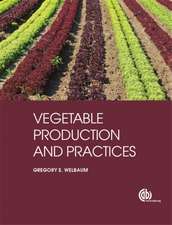Stomata
Autor M. Fricker, C. Willmeren Limba Engleză Paperback – 30 oct 2012
| Toate formatele și edițiile | Preț | Express |
|---|---|---|
| Paperback (2) | 701.59 lei 43-57 zile | |
| SPRINGER NETHERLANDS – 30 oct 2012 | 701.59 lei 43-57 zile | |
| SPRINGER NETHERLANDS – 31 oct 1995 | 949.23 lei 43-57 zile |
Preț: 701.59 lei
Preț vechi: 825.39 lei
-15% Nou
Puncte Express: 1052
Preț estimativ în valută:
134.25€ • 140.54$ • 111.08£
134.25€ • 140.54$ • 111.08£
Carte tipărită la comandă
Livrare economică 07-21 aprilie
Preluare comenzi: 021 569.72.76
Specificații
ISBN-13: 9789401042567
ISBN-10: 940104256X
Pagini: 392
Ilustrații: XVI, 375 p.
Dimensiuni: 155 x 235 x 21 mm
Greutate: 0.55 kg
Ediția:2nd ed. 1996
Editura: SPRINGER NETHERLANDS
Colecția Springer
Locul publicării:Dordrecht, Netherlands
ISBN-10: 940104256X
Pagini: 392
Ilustrații: XVI, 375 p.
Dimensiuni: 155 x 235 x 21 mm
Greutate: 0.55 kg
Ediția:2nd ed. 1996
Editura: SPRINGER NETHERLANDS
Colecția Springer
Locul publicării:Dordrecht, Netherlands
Public țintă
ResearchCuprins
1 Introduction.- 1.1 General considerations about stomata.- 1.2 Historical aspects.- 1.3 The importance of research into stomatal functioning and behaviour.- References.- 2 The distribution of stomata.- 2.1 Location and occurrence of stomata.- 2.2 Stomatal frequency.- 2.3 Stomatal patterning.- 2.4 Heterogeneity in stomatal characteristics and responses.- References.- 3 The structure and development of stomata.- 3.1 Anatomy and morphology of the leaf epidermis.- 3.2 Development and differentiation of stomata.- 3.3 The ultrastructure of guard cells.- References.- 4 The mechanics of stomatal movements.- 4.1 Introduction.- 4.2 Water relations of guard cells.- 4.3 The physico-chemical aspects of stomatal movements.- 4.4 Morphological changes of the plasma membrane and tonoplast of guard cells during stomatal movements.- 4.5 Physiological and mechanical properties of GCPs.- References.- 5 The theory of gas diffusion through stomata.- 5.1 Introduction.- 5.2 Fick’s law and the driving forces for diffusion.- 5.3 The analogy between electrical circuits and leaf resistances.- 5.4 Diffusion through a single pore and multipores.- 5.5 Cuticular conductance.- 5.6 Boundary layer conductance.- 5.7 Water use efficiency.- References.- 6 Stomatal responses to environmental factors.- 6.1 Introduction.- 6.2 Interaction of environmental factors which influence stomatal behaviour.- 6.3 Stomatal responses to light quality and quantity.- 6.4 Carbon dioxide.- 6.5 Temperature.- 6.6 Plant water status and atmospheric humidity.- 6.7 Mineral nutrition.- 6.8 Circadian rhythms and shorter-term oscillations in stomatal movements.- 6.9 Stomatal activity during the life cycle of a leaf.- 6.10 Stomatal behaviour in canopies.- 6.11 Gaseous environmental pollutants and stomata.- 6.12 Plant pathogens andstomata.- References.- 7 The influence of hormones and other naturally occurring compounds on stomatal behaviour.- 7.1 Introduction.- 7.2 Abscisic acid.- 7.3 Other sesquiterpenoids (xanthoxin, all-trans farnesol, vomifoliol, phaseic acid).- 7.4 Other hormones.- 7.5 Fatty acids.- 7.6 Phytotoxins.- 7.7 Phytoalexins.- 7.8 Other compounds.- 7.9 Artificial control of stomata.- References.- 8 Ionic relations of stomatal movement and signal transduction in guard cells.- 8.1 Introduction.- 8.2 The involvement of ions in stomatal movements.- 8.3 Ion fluxes and the driving forces for ion movement.- 8.4 Summary of ion movement events during stomatal movements.- 8.5 Signal perception and transduction by guard cells.- References.- 9 The metabolism of guard cells.- 9.1 Introduction.- 9.2 The flow of carbon from starch to malate during stomatal opening.- 9.3 The fate of malate during stomatal closure.- 9.4 The role of chloroplasts in guard cells.- 9.5 Metabolite transport into guard cells and sucrose metabolism.- 9.6 The energy relations of stomatal movements.- 9.7 Lipid metabolism in guard cells.- References.- 10 Recent developments and future research.- 10.1 Introduction.- 10.2 Stomatal distribution and patterning.- 10.3 Cell and tissue differentiation.- 10.4 Mechanical relations of the epidermis.- 10.5 Diffusion of gases and the role of stomata.- 10.6 Environmental effects.- 10.7 Hormone action.- 10.8 Ion transport and signalling.- 10.9 Intermediary metabolism and its regulation.- 10.10 Molecular biology of stomata.- References.
Recenzii
The book could be recommended for advanced students and specialists in plant physiology, biology, agriculture and related disciplines. - Acta Physiological Plantarium; Overall, the changes that the authors have made in this new edition of Stomata mark the book's successful transition from being a handbook of stomatal research to an essential textbook of stomatal physiology. I have no hesitation in recommending it, and anticipate that in future years it will become a standard text for scholars of both plant and stomatal physiology - Trends in Plant Science; Reviews of the first edition:; This paperback is, in general, well written and easy to read, especially an as introductory text for students ... A service to plant physiology has been well performed. This reviewer commends this little book as being a `window upon the soul' of stomata ... - Journal of Experimental Botany; [Willmer] gives a highly readable, excellently illustrated account of the distribution, anatomy, structure and development of guard cells ... I know of no other review of the structural aspects of this range and elegance - Times Higher Educational Supplement; Dr Willmer has produced a neat, crisply written monograph which will serve up to first degree level in all plant sciences for a good while to come - The Biologist











